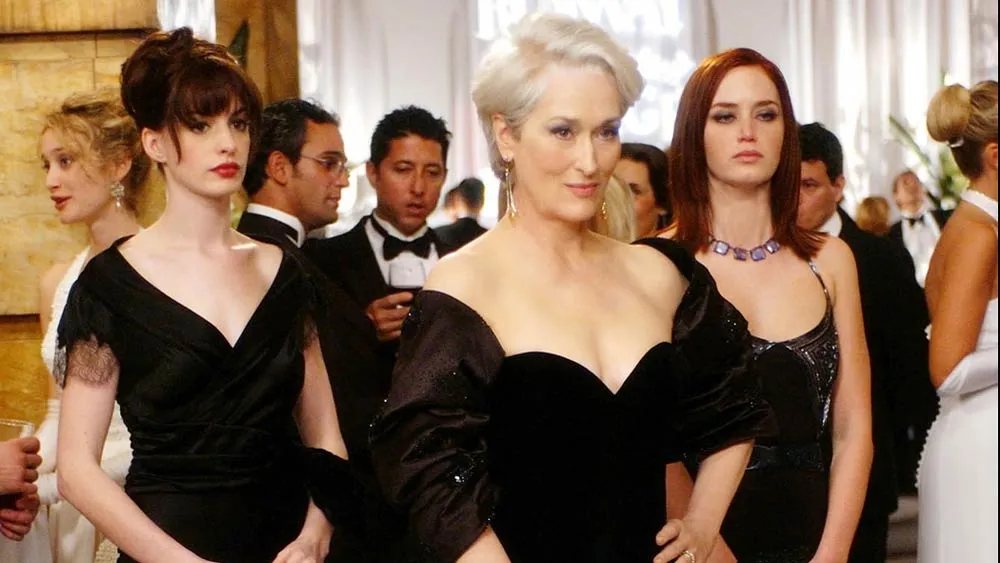December 1, 2017
In the 'Zone,' and How, with 'The Twilight Zone Encyclopedia' Author Steven Jay Rubin
Kilian Melloy READ TIME: 6 MIN.
Movie producer, screenwriter, author of two books on the James Bond films and a volume devoted to American war movies: With such a resume, Steven Jay Rubin might not be an intuitive guess when it comes to the subject of a "Twilight Zone" reference book, let alone the most comprehensive book yet about the original series, its episodes, and the actors, writers, producers, and other creative people who worked on it.
But that's exactly what Rubin has accomplished with his newly-published "The Twilight Zone Encyclopedia," an exhaustively researched, meticulously organized, lavishly illustrated, and lovingly detailed reference work on Rod Serling's original series. Whether reading it cover to cover or browsing through its 448 fact- (and fun-) filled pages, one can't help but feel transported right back to the special place Serling's classic anthology show occupied -- a place, as Serling himself had it, "between light and shadow," where comedy, mystery, extravagant flights of imagination, hauntings, and -- most famously -- ironic twist endings reigned supreme.
"Twilight Zone" ran on CBS for five seasons, between 1959 - 1964. All but the 18 episodes of its fourth season were half-hour segments that presented the show's outlandish -- and often poignant, chilling, and challenging -- stories in ways that often seemed straightforward but usually hid a sting in their tails. (In a short-lived experiment that produced some of the series' most memorable work, Season Four was re-cast in an hourlong format before the show reverted to a half-hour slot in the fifth and final season.) Each episode told a single story, and each was filmed in lustrous black and white (except for six Season Two episodes, when the producers experimented with video, still in black and white, as a cost-saving measure).
There have been two television reboots since the original show went off the air: A three-season version that ran on CBS in the mid-1980s, and a 2002 Forest Whitaker-hosted version that lasted a single season on UPN. Both reboots were produced in color, and both packaged multiple stories into each hour-long installment. There have also been two movies -- the big-budget 1983 anthology film that offered four stories (three remakes of original series episodes and an original segment, plus a throwaway framing device), and "Rod Serling's Lost Classics," a 1994 made-for-TV project that presented an unfilmed Serling script along with a Richard Matheson-adapted Serling story. Rumors of a third reboot have long circulated, the most recent focusing on reports that comedian Jordan Peele ("Get Out") is in contention to produce a new series for CBS All Access.
For the dyed-in-the-wool Zonephile, though, the original series, in its story-of-the-week, black and white glory, is the benchmark. Rubin not only respects that tradition; he celebrates it, confining his attention to the original 156 episodes and absolutely doting over them. There have been a number of highly enjoyable and informative books dedicated to "The Twilight Zone," starting with Marc Scott Zicree's seminal "The Twilight Zone Companion," but Rubin's volume stands out from the rest. His palpable love for the show is present on every page, and "Twilight Zone" fanatics will recognize in him a kindred spirit.
It was with no little excitement -- and appreciation -- that EDGE caught up with Steven Jay Rubin for a chat about "The Twilight Zone Encyclopedia."
EDGE: I heard your interview with Tom Elliot on Tom's Twilight Zone Podcast, and you mentioned that in an early version of "The Twilight Zone Encyclopedia" you not only had bios on the writers, directors, producers, and actors who contributed to the show, but also all the characters that appeared across 156 episodes. What went into those bios? Did you reference the scripts for nuggets that might have been edited out? Did you infer information about the characters at all?
Steven Jay Rubin: It was purely based on the episodes. I didn't get into early script nuances. But I felt that each character, being so iconic, was worth a bio. The editor felt that since we described the episodes and main characters in the Set Up to each episode, the bios were repetitious. So they went hasta la bye bye.
EDGE: I have to say I am impressed with the way in which you really have made "The Twilight Zone Encyclopedia" the ultimate TZ reference book -- you have found ways to work in various facts and figures about the show that one might not initially expect to find in a work of this sort. (One of my favorite examples is your entry for the word "Episodes," which you include as a way to list all 156 episode titles for the original Twilight Zone.)
Steven Jay Rubin: Given that there have been a number of books on the Zone, I really wanted to try a different take and provide information that was disseminated in a different manner. For instance, as much as I love the Zicree book, Mark didn't provide an episode inventory that you could go to quickly. With my Episode list, you always know they're all there.
EDGE: The amount of work that went into this book is clearly staggering -- that's evident from each bio and the sheer level of attention you've brought to the show's minutiae. What sparked this project for you -- and, more to the point, what sustained you through what must have been an arduous research and writing process?
Steven Jay Rubin: My biggest motivating factor was a desire to provide background information on all the actors. I really believe that as wonderful as the stories were - and Rod Serling and his writers were all genius level creators - the actors of that era brought those stories to life, and they need to be mentioned loudly. Also, I've seen most of these actors in other iconic roles that I wanted to mention in their bios.
Other ideas came about because they weren't mentioned in the other books - such as ratings - which I researched through the Hollywood trades. And I also wanted to include a section on (unofficial "Twilight Zone" pilot, first aired in 1958 on Westinghouse Desilu Playhouse) "The Time Element," which was so much a Zone episode before there was a Zone.
EDGE: If you were offered a publication contract to prepare a similar reference work on any TV show or movie franchise, what might you pick as your next subject?
Steven Jay Rubin: Well, I am attempting to sell a new edition of my "James Bond Encyclopedia," which definitely needs updating. It was last updated pre-Daniel Craig in 2003. It is a good question, though. No other subject comes to mind at the moment. When I'm not working on film and television history projects, I'm very active as a comedy screenwriter in Hollywood, trying to write and produce.
EDGE What might be the next project you're considering?
Steven Jay Rubin: Other than the "Bond Encyclopedia," I have a children's picture book coming out in 2019, which I wrote with a screenwriting partner, David Lee Miller. We met when he was running the Criterion Collection, and he hired me to be the commentary host for the first three James Bond movies. The book is entitled "The Cat Who Lived with Anne Frank" - and with wonderful illustrations, it tells the story of Anne in the attic from the cat's point of view. There really was a cat who lived in the attic. He was Peter Van Pelz's cast, Mouschi.
I'm also tooling around with a young adult novel based on a screenplay I wrote back in the 1990s - kind of an unusual take on "The Wizard of Oz." Interestingly, most of the premises I come up with owe a salute to Rod Serling, who has forever inspired me to let my imagination go... to infinity and beyond.
"The Twilight Zone Encyclopedia" is available now from Chicago Review Press.
Kilian Melloy serves as EDGE Media Network's Associate Arts Editor and Staff Contributor. His professional memberships include the National Lesbian & Gay Journalists Association, the Boston Online Film Critics Association, The Gay and Lesbian Entertainment Critics Association, and the Boston Theater Critics Association's Elliot Norton Awards Committee.




